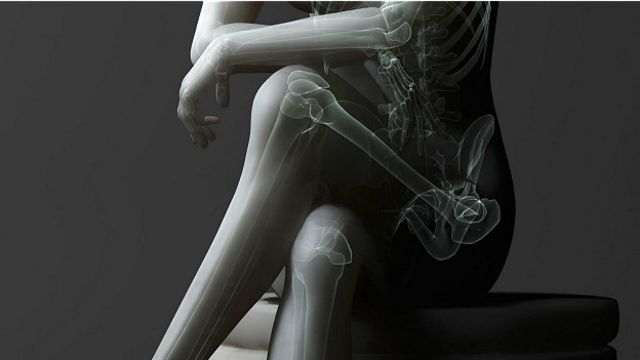Many people believe that sitting with one leg crossed over the other, although comfortable, is harmful to health. We decided to check whether there is any scientific data behind this opinion and whether it makes sense for those who like to sit like this to change their habits.
Many media and Internet sites warn readers against staying in a cross-legged sitting position for long periods of time (Live24, Bazaar.ru, MC "Ideal-Clinic", "The ABC of Health", Womanel). In 1999, the nutritional supplement company Pharmaton even launched The Great American Cross-Out advertising campaign encourages American women to give up crossing their legs for 24 hours. According to them, this position contributed to poor circulation and the development of varicose veins. List of negative consequences includes diseases ranging from postural disorders to impotence and infertility.
The five health consequences of cross-legged sitting most frequently cited in online publications are: varicose veins, high blood pressure, nerve palsy, joint damage, and poor posture. We decided to find medical studies on each of the five points and find out whether sitting like this is really dangerous for your health.

1. Varicose veins
The Framingham Study, one of the most famous and largest in the field of heart and vascular diseases, was initiated in the USA in 1948 and is still ongoing. In 1988, based on the results of a 16-year observation, scientists came concluded that the main risk factors for developing varicose veins in men were smoking and lack of physical activity for men, and for women - lack of physical activity, high blood pressure and excess weight. Genetics also played an important role: more than 80% of people with varicose veins had at least one parent with the same disease. Many other scientific studies studied risk factors for varicose veins. None of them have crossing legs on the list didn't hit.
There is one nuance: People who already have varicose veins and, as a result, an increased risk of deep vein thrombosis (DVT), are not recommended to sit for long periods of time, including cross-legged. During prolonged periods of immobility, such as during long trips or airplane flights, blood flow in the veins slows because the calf muscles do not contract and push blood towards the heart. But thrombosis usually develops in people with other risk factors, and is extremely rare in healthy people.
Conclusion: There is no evidence that crossing your legs increases the risk of developing varicose veins.
2. Increased blood pressure
One of the first major research, which involved measuring blood pressure with different leg positions, was carried out at a hypertension clinic in Istanbul. The scientists measured the blood pressure of the experiment participants several times: with their legs crossed and with their legs in a normal position. Blood pressure increased at the moment when the subjects crossed their legs, but after three minutes the pressure returned to its original values.

There are two possible reasons why crossing your legs may temporarily increase your blood pressure. According to one of these, blood rushes to the chest at the moment when a person lifts one leg to throw it over the other, as a result of which the pressure increases. According to another - when crossing, the leg muscles are subjected to static load, their blood vessels are compressed. Because of this, resistance to natural blood flow increases, leading to increased blood pressure. After returning to the starting position (legs parallel to each other), the pressure returns to normal.
Conclusion: Crossing your legs does cause a temporary increase in blood pressure, but there is no evidence of long-term changes.
3. Paralysis (particularly of the peroneal nerve)
Of course, if you sit in one position for a long time, your legs may become numb. The reason is that crossing your legs increases pressure on the peroneal nerve under the knee, which is responsible for sensation in the lower legs and feet. But if there is a tingling sensation in the limbs, it is temporary and will quickly pass as soon as the person changes position.
In principle, maintaining the same sitting position for many hours can cause peroneal nerve palsy. However, in South Korean research Among the main reasons for the appearance of this type of paralysis, sitting on a chair in a cross-legged position is not mentioned. Another cross-legged pose that is more common in Korean culture is mentioned. In the study they call it “Korean style”.

Conclusion: Long-term numbness and paralysis are unlikely consequences of crossing our legs, since we tend to change positions as soon as something becomes numb or uncomfortable.
4. Problems with the pelvic muscles and hip joints
You can find on the Internet concernsas if crossing the legs over time causes the muscles on the inside of the thigh to become shorter and the muscles on the outside to become longer, putting the joints at risk of misalignment and increasing the risk of dislocations.
Study The University Medical Center Rotterdam showed that this is not so and that in this regard there is even benefit from the cross-leg pose. Participants in the experiment sat: a) with their legs straight; b) legs crossed at the knees; c) legs crossed at the ankles; d) legs crossed at the knees and ankles.

The scientists then modeled the exact flexion angles in embalmed human joints, allowing them to measure which muscles work when we cross our legs. They found that crossing your legs at the knees increased piriformis muscle lengthening by 11% compared to keeping both feet on the floor. The study authors concluded that this pose improves hip joint stability as much as tensing the abdominal muscles.

Conclusion: The cross-legged pose is to some extent even beneficial for the hip joints.
5. Negative impact on posture
There are several opinions on this matter. One of research showed that people who sat cross-legged for more than three hours a day were more likely to slouch. However another The experiment showed that posture problems disappeared when people were asked to consciously sit with a straight back, albeit with their legs crossed.
Conclusion: the tendency to stoop depends on a person’s habit of rounding or not rounding his back, and not on the position of his legs.
So, if you want to cross your legs, you can do it without fear of harming your health. The main thing is not to sit in the same position (any) for too long, risking numbness in your limbs.
Misconception
Read on topic:
- Sitting, squatting, and the evolutionary biology of human inactivity
- Squatting is good for health, scientists say
- Active lifestyles related to excellent self-rated health and quality of life
- Prolonged sitting increases the risk of many diseases
If you find a spelling or grammatical error, please let us know by highlighting the error text and clicking Ctrl+Enter.







